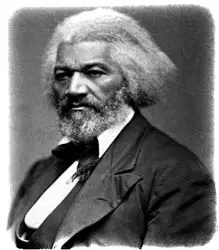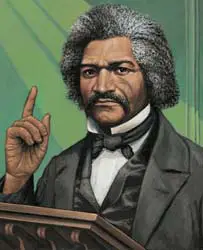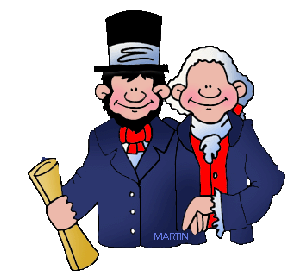Frederick Douglass
Frederick Douglass was a former slave and the son of a white father whom he never knew and an African-American mother that died when he was ten years old. Douglass was a human rights leader within the movement of the abolitionists, an eloquent speaker and the first African-American citizen to hold a high position in the United States government. Douglass was a supporter of women’s rights and believed in a world where the color of someone’s skin shouldn’t be a consideration of treatment or education.


In the early 1800’s it was against the law to educate a slave. Frederick Douglass was luckily sent to a home to live where the white woman in the household began to teach him to read. Later, he learned from other white students and neighbors and this started his journey into being a self-taught individual. Reading newspapers of the day helped Douglass to come to realize how wrong slavery was and he became more familiar with the abolitionists (people who wanted to free the slaves) views.


Douglass was ‘owned’ by a number of slave owners, and a few of them were brutal in their physical treatment of him. He tried to escape slavery twice and finally succeeded with the help of a free black woman who gave him papers to show he was free. He ended up in Maryland and then sent for the woman that had helped him, as he had fallen in love with her and they were married and moved to Massachusetts. They settled in a community that had a lot of free African Americans and he continued to follow the writings of many of the abolitionists, including William Lloyd Garrison, publisher of the newspaper The Liberator.

Douglass began to attend abolition meetings and talk about his experience as a slave. Garrison was so impressed he wrote an article about Douglass and encouraged him to continue speaking engagements which led to the publishing of his autobiography: Narrative of the Life of Frederick Douglass: an America Slave. The book became an immediate best seller and was translated into quite a few languages. It was so well-written than some accused him of lying, as no one that had not received an education could write so well.

To avoid recapture, Douglass escaped to Ireland just as the Potato Famine was beginning. He stayed in Great Britain and Ireland for two years, giving speaking engagements that were so popular that his followers collected enough money to buy his freedom. In 1847 he returned to the United States as a free man.

Upon his return, he produced a number of abolitionist newspapers: The North Star, Frederick Douglass Weekly, Frederick Douglass’ Paper, Douglass’ Monthly and New National Era. During that time Douglass became friends with Elizabeth Cady Stanton, as he supported the women’s movement for freedom and the vote.

By the time the Civil War came about, Douglass had become one of the most famous black men in America. He spoke with President Lincoln on treatment of the black soldier and then later with President Andrew Johnson on black suffrage.

Douglass was appointed to many political positions in the next years after the war ended. He served as president of the Freedman’s Savings Bank and as chargé d’affaires for the Dominican Republic. In 1872 was the first black American to be nominated for Vice President of the United States, even though he had not consented for his name to be on the ballot.




